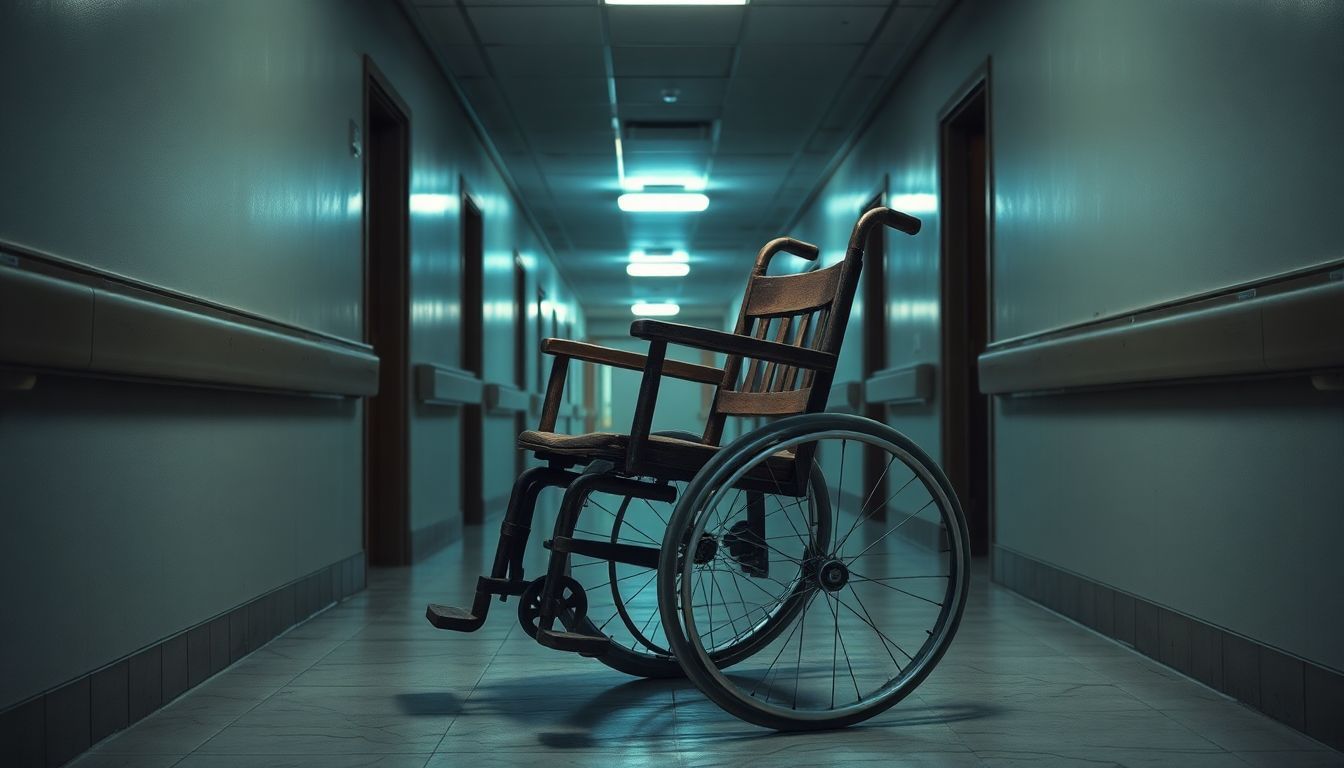What is Pain and Suffering Compensation: A Comprehensive Guide to Understanding

Pain and suffering compensation covers physical and emotional harm from accidents. It’s separate from economic damages like medical bills and lost wages. This type of compensation aims to make up for the pain, discomfort, and mental distress a person experiences after an injury.
Courts recognize both physical pain and emotional suffering as valid reasons for compensation. Common examples include chronic pain, depression, anxiety, and post-traumatic stress disorder (PTSD).
Calculating pain and suffering damages can be complex. Two main methods are used: the multiplier method and the per diem method. The multiplier method uses a number between 1.5 and 5 to multiply economic damages.
The per diem method assigns a daily value to the recovery period. Strong evidence is crucial for these claims. This can include photos of injuries, medical records, and personal accounts of the pain experienced.
Emotional distress is another aspect of pain and suffering. People can sue for mental anguish caused by someone else’s actions. Successful claims may cover costs for mental health treatment and counseling.
Personal injury lawyers play a key role in these cases. They help maximize compensation by negotiating with insurance companies and handling legal details.
Real-life examples show the impact of pain and suffering compensation. Frektman & Associates secured seven-figure settlements for trip-and-fall cases. Other significant cases involved manhole accidents leading to ongoing pain or major scarring.
These examples highlight the importance of skilled legal representation in such cases.
Proving pain and suffering can be challenging. It’s hard to measure subjective experiences. Insurance companies often dispute these claims. Strong evidence, like detailed medical records, is essential to support a claim.
This guide will explore pain and suffering compensation in depth. Read on to learn more about this important legal concept.
Key Takeaways
- Pain and suffering compensation covers physical and emotional distress from injuries, including mental anguish and loss of enjoyment.
- Common reasons for claims include car crashes, slip and falls, medical errors, and workplace accidents caused by someone’s negligence.
- Courts use methods like the multiplier (1.5 to 5 times economic damages) and per diem to calculate compensation amounts.
- Strong evidence is crucial, including medical records, photos, witness statements, pain journals, and expert opinions.
- Legal help can be vital in navigating complex claims and negotiating with insurance companies for fair compensation.
Definition of Pain and Suffering
Pain and suffering refers to the physical and emotional distress a person faces after an injury. It goes beyond visible wounds, including mental anguish, loss of enjoyment, and ongoing trauma.
This type of harm is separate from medical bills or lost wages. Courts recognize both past and future pain as part of this compensation.
Pain and suffering means the physical and emotional distress a person suffers because of an injury.
Lawyers often use this term in personal injury cases to seek damages for their clients. The concept covers a wide range of effects, from physical agony to long-lasting emotional scars.
Understanding pain and suffering is key to grasping its role in legal claims. Next, we’ll explore the different types of pain and suffering recognized in law.
Types of Pain and Suffering
Building on our understanding of pain and suffering, we now explore its various forms. These types of pain and suffering can greatly impact a person’s life and may be grounds for compensation.
- Physical Pain: This includes actual bodily discomfort from injuries. It can range from acute pain right after an accident to chronic pain that lasts for months or years.
- Emotional Distress: Anxiety, depression, and trauma often follow serious accidents. These feelings can disrupt daily life and relationships.
- Mental Anguish: This refers to the psychological impact of an incident. It may involve fear, worry, or grief that affects mental health.
- Loss of Enjoyment: When injuries prevent someone from enjoying hobbies or activities they once loved, it’s a form of suffering.
- Diminished Quality of Life: Serious injuries can change a person’s lifestyle, making daily tasks harder or impossible.
- Psychological Harm: This includes conditions like PTSD or phobias that develop after a traumatic event.
- Relationship Strain: Injuries can affect personal relationships, causing stress in marriages or family dynamics.
- Sleep Disorders: Pain or emotional distress can lead to insomnia or other sleep issues, impacting overall health.
- Scarring or Disfigurement: Visible injuries can cause emotional suffering due to changes in appearance.
- Loss of Consortium: This refers to the impact on the relationship between the injured person and their spouse.
Common Reasons for Compensation
Moving from types of pain and suffering, we now explore common reasons for compensation. Personal injury cases often lead to pain and suffering claims. These cases stem from accidents caused by someone else’s carelessness.
Car crashes, slip and falls, and medical errors are frequent sources of such claims. Victims may seek damages for physical pain, emotional distress, and reduced quality of life.
Negligence forms the basis for many pain and suffering lawsuits. This occurs when someone fails to act with reasonable care, causing harm to others. For example, a distracted driver who hits a pedestrian may be held liable for the victim’s injuries and suffering.
Workplace accidents, defective products, and dog bites can also result in valid claims. In these cases, victims may pursue compensation through settlements or court judgments to cover both economic and non-economic damages.
Methods of Calculating Pain and Suffering
Calculating pain and suffering compensation involves specific methods to determine fair monetary value. Insurance companies and courts use these approaches to quantify non-economic damages.
| Method | Description |
|---|---|
| Multiplier Method |
– Totals economic damages – Multiplies by 1.5 to 5 – Example: $100,000 x 1.5 = $150,000 – Factors: Injury severity, recovery time, daily life impact |
| Per Diem Method |
– Assigns daily dollar amount – Multiplies by recovery days – Based on victim’s daily earnings – Example: $200/day for 100 days = $20,000 |
| Hybrid Approach |
– Combines multiplier and per diem – Provides balanced assessment – Accounts for short and long-term effects – Offers flexibility in complex cases |
From my experience as a personal injury attorney, these methods serve as starting points for negotiations. The final compensation often depends on the unique aspects of each case. Supporting evidence plays a crucial role in proving pain and suffering claims.
Supporting Evidence for Claims
Proving pain and suffering requires solid evidence. Strong supporting documents can greatly impact your claim’s success.
- Medical records: These show the extent of injuries and treatments received. They include doctor’s notes, test results, and prescriptions.
- Photographs: Images of injuries and accident scenes provide visual proof. They help others understand the severity of the incident.
- Witness statements: Testimonials from family and friends describe how the injury affected daily life. They offer insights into changes in behavior or abilities.
- Pain journal: A daily log tracks pain levels and limitations. It details how the injury impacts work, hobbies, and relationships.
- Expert opinions: Medical professionals can explain complex injuries. Their testimony adds weight to claims about long-term effects.
- Police reports: Official accounts of accidents provide unbiased information. They often include details about injuries and property damage.
- Employment records: These show lost wages and missed work days. They prove financial impact due to the injury.
- Video evidence: Footage of the accident or its aftermath can be powerful. It captures real-time reactions and visible pain.
- Physical evidence: Damaged items from the incident support your story. They might include torn clothing or broken personal belongings.
- Psychological evaluations: These assess emotional trauma from the incident. They can prove claims of anxiety, depression, or PTSD.
Additional Insights on Pain and Suffering Compensation
Pain and suffering compensation covers more than physical injuries. Read on to learn about emotional distress claims and legal assistance for your case.
Emotional and Psychological Impact
Accidents often leave deep scars beyond physical wounds. Victims may face depression, anxiety, or PTSD after a traumatic event. These mental health issues can disrupt daily life, causing sleep problems and changes in eating habits.
Many struggle with overwhelming fear, anger, or humiliation that lingers long after physical injuries heal.
Emotional suffering takes a heavy toll on accident victims. The psychological impact can be just as painful as physical injuries, if not more so. Mental anguish may prevent people from working, enjoying hobbies, or maintaining relationships.
Chronic pain and emotional turmoil can lead to a lower quality of life overall. Recognizing these unseen effects is crucial when seeking fair compensation after an accident.
Can You Sue for Emotional Distress?
Building on the emotional and psychological impact of pain and suffering, we now explore the legal avenue of suing for emotional distress. Individuals can take legal action for emotional distress if they can prove mental anguish caused by another’s actions.
This type of claim requires showing severe reactions such as fury, humiliation, or distress resulting from the incident.
To succeed in an emotional distress lawsuit, one must prove either negligence or intentional infliction of emotional distress. Courts may award compensation for various costs linked to the emotional harm, including mental health assessments, counseling sessions, and medications.
These damages aim to address the psychological suffering and emotional trauma experienced by the victim.
Importance of Legal Assistance
Legal help is crucial when seeking pain and suffering compensation. Skilled personal injury lawyers know how to maximize your claim. They handle complex legal processes and negotiate with insurance companies on your behalf.
This expertise can make a big difference in the outcome of your case.
Roden Law offers free consultations with experienced attorneys. These legal experts understand statutory limitations and can advocate effectively for victims. They guide you through each step, from filing the claim to presenting evidence.
With their help, you can focus on recovery while they fight for fair compensation.
Real-Life Examples
Real-life examples show the impact of pain and suffering compensation. Frektman & Associates secured a seven-figure settlement for a trip-and-fall case. This large sum highlights the serious nature of such accidents and their lasting effects on victims.
The firm also won a $2.2 million settlement for a manhole injury, proving that everyday hazards can lead to major harm.
These cases reveal how pain and suffering extend beyond physical injuries. Victims often face chronic pain, which affects their daily lives and work. Some endure lasting scars or lose body functions, changing their quality of life forever.
Such examples stress the need for fair compensation to help victims cope with their new reality and cover ongoing medical costs.
Filing a Pain and Suffering Claim
Filing a pain and suffering claim requires careful preparation and documentation. The process involves several key steps to ensure a strong case for compensation.
- Gather evidence: Collect medical records, bills, and reports that show your injuries and treatment.
- Document pain levels: Keep a daily journal noting pain intensity, limitations, and emotional distress.
- Obtain witness statements: Ask friends, family, or coworkers to describe how your injuries have affected you.
- Calculate damages: Use methods like the multiplier or per diem to estimate your pain and suffering costs.
- Draft a demand letter: Write a detailed account of your injuries, treatment, and impact on your life.
- Include supporting documents: Attach all relevant evidence to strengthen your claim.
- Submit the claim: File your demand letter and supporting documents with the insurance company or court.
- Negotiate: Be prepared to discuss and potentially adjust your claim amount during settlement talks.
- Consider legal help: An attorney can guide you through the process and fight for fair compensation.
- Be patient: Pain and suffering claims can take time to resolve, especially in complex cases.
Challenges in Proving Pain and Suffering
Proving pain and suffering in legal claims often poses tough hurdles. Victims must show clear proof of their distress, which can be hard since pain is personal. Courts need solid evidence like medical records, expert opinions, and witness statements.
Insurance firms may doubt claims, making it harder to get fair pay. My work with injury victims has shown that keeping detailed logs of daily pain levels and how it affects life can help.
Photos of injuries, therapy notes, and job absence records also back up claims. Still, some people struggle to express their suffering, which can weaken their case.
Emotional trauma adds another layer of difficulty. Unlike physical wounds, mental anguish doesn’t always leave visible marks. Victims may need psych exams or counselor reports to prove their mental state.
Social media can hurt cases if posts seem to contradict claimed pain levels. Lawyers often advise clients to be careful online during legal battles. Time gaps in treatment or pre-existing conditions can also make proving pain harder.
Courts look for direct links between the incident and claimed suffering. Getting the right mix of proof is key to winning fair compensation.
Conclusion
Pain and suffering compensation helps victims recover from physical and emotional harm. Victims can seek damages for various injuries, from car accidents to medical malpractice. Gathering strong evidence is key to building a solid claim.
Legal experts can guide victims through the complex process of filing a lawsuit. Compensation amounts vary based on injury severity and impact on daily life. Taking action promptly increases the chances of fair compensation for pain and suffering.
FAQs
1. What defines pain and suffering compensation?
Pain and suffering compensation covers non-economic damages in personal injury cases. It aims to provide monetary relief for physical discomfort and emotional distress resulting from an accident or injury. This compensation addresses the impact on quality of life, including chronic pain, anxiety, and loss of enjoyment.
2. How do courts calculate pain and suffering damages?
Courts use various methods to determine pain and suffering damages. The multiplier method applies a number between 1.5 and 5 to the total economic damages. The per diem approach assigns a daily rate for pain and suffering, multiplied by the expected duration. Factors like injury severity, recovery time, and long-term effects influence the final amount.
3. Can I claim pain and suffering without physical injuries?
Yes, you can claim pain and suffering without physical injuries in some cases. Emotional distress, mental anguish, and psychological trauma may qualify for compensation. However, proving these claims often requires strong evidence, such as medical records, expert testimony, or documentation of therapy sessions.
4. What evidence supports a pain and suffering claim?
Strong evidence is crucial for pain and suffering claims. Medical records, expert testimonies, and personal journals documenting daily struggles help build a solid case. Witness statements from family and friends can illustrate the impact on your life. Photographic or video evidence of your recovery process also strengthens your claim.
References
- https://hrflegal.com/pain-and-suffering-in-personal-injury-cases/ (2024-08-28)
- https://www.lrwlawfirm.com/common-reasons-for-pain-and-suffering-compensation/ (2024-03-11)
- https://www.aa-legal.com/legal-resources/personal-injury/pain-and-suffering-compensation-calculated/
- https://www.rhoadsandrhoads.com/blog/comprehensive-guide-to-pain-and-suffering-laws/
- https://rodenlaw.com/blog/value-of-pain-and-suffering/ (2024-09-10)
- https://dcmdlaw.com/blog/understanding-pain-and-suffering-damages-obtaining-full-compensation-after-an-accident/
- https://dozierlaw.com/comprehensive-guide-to-understanding-personal-injury-law-essentials/
- https://pmc.ncbi.nlm.nih.gov/articles/PMC3152687/
- https://goldberglaw.com/can-i-sue-for-emotional-distress/ (2022-09-29)
- https://anthonypaglia.com/pain-and-suffering-basics/
- https://dpinjuryattorneys.com/pain-and-suffering-settlement-examples/
- https://www.mygeorgiaattorney.com/challenges-in-calculating-pain-and-suffering-damages/




